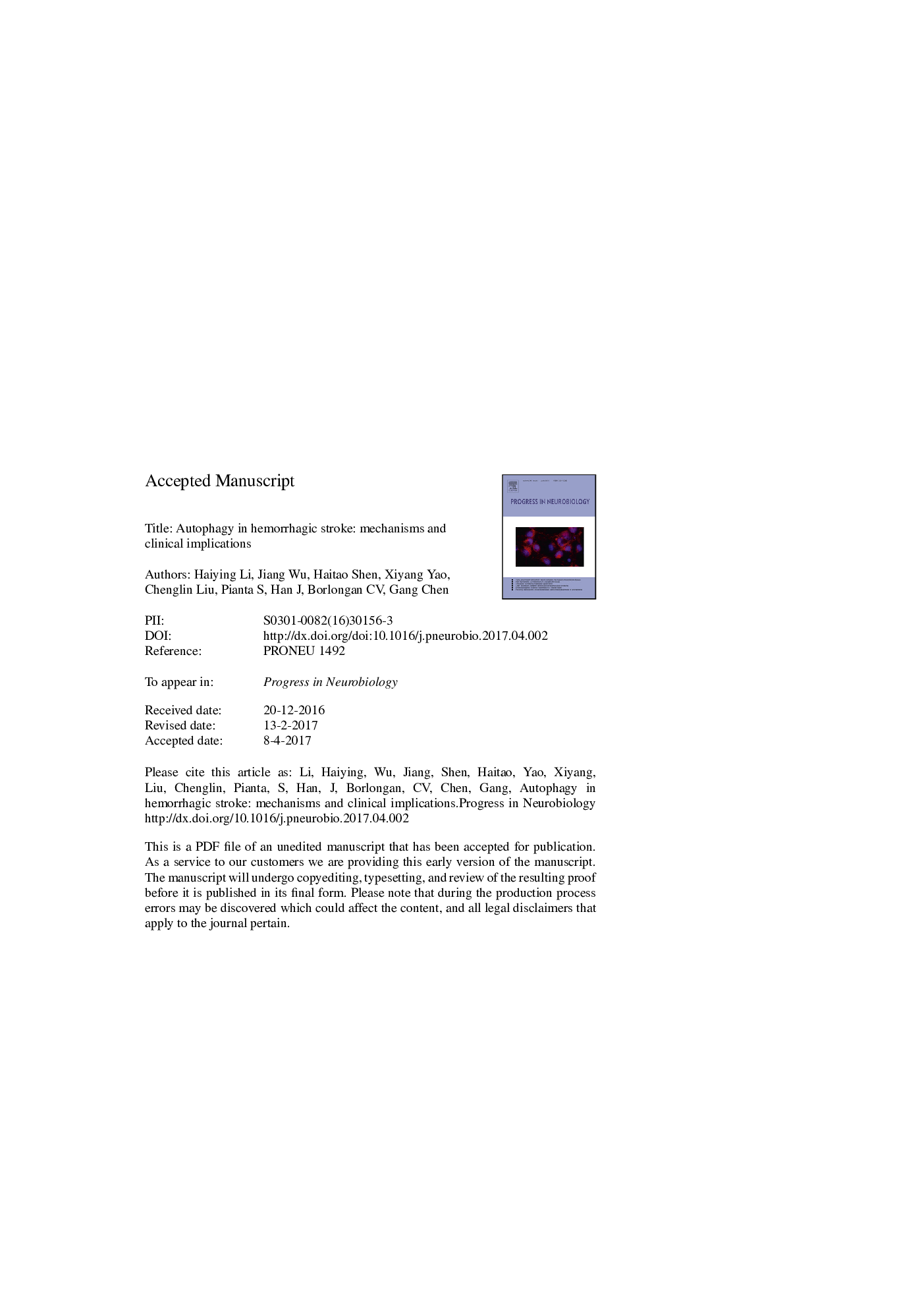| Article ID | Journal | Published Year | Pages | File Type |
|---|---|---|---|---|
| 8842181 | Progress in Neurobiology | 2018 | 104 Pages |
Abstract
Accumulating evidence advances the critical role of autophagy in brain pathology after stroke. Investigations employing autophagy induction or inhibition using pharmacological tools or autophagy-related gene knockout mice have recently revealed the biological significance of intact and functional autophagy in stroke. Most of the reported cases attest to a pro-survival role for autophagy in stroke, by facilitating removal of damaged proteins and organelles, which can be recycled for energy generation and cellular defenses. However, these observations are difficult to reconcile with equally compelling evidence demonstrating stroke-induced upregulation of brain cell death index that parallels enhanced autophagy. This begs the question of whether drug-induced autophagy during stroke culminates in improved or worsened pathological outcomes. A corollary fascinating hypothesis, but presents as a tricky conundrum, involves the effects of autophagy on cell death and inflammation, which are two main culprits in the disease progression of stroke-induced brain injury. Evidence has extended the roles of autophagy in inflammation via cytokine regulation in an unconventional secretion manner or by targeting inflammasomes for degradation. Moreover, in the recently concluded Vancouver Autophagy Symposium (VAS) held in 2014, the potential of selective autophagy for clinical treatment has been recognized. The role of autophagy in ischemic stroke has been reviewed previously in detail. Here, we evaluate the strength of laboratory and clinical evidence by providing a comprehensive summary of the literature on autophagy, and thereafter we offer our perspectives on exploiting autophagy as a drug target for cerebral ischemia, especially in hemorrhagic stroke.
Keywords
PCDSbiα-SynNMDAN-methyl-d-aspartateMCAOnNOSAMPK3-MABNIP3SAHEBILC3NLRP3tunicamycinAIM2tert-butylhydroquinone2-Methoxyestradiol2me2BH3Bcl-2 homology 3NCOA4nuclear receptor coactivator 4CMAGFPASCNrf2HIF-1TSACVSTBHQPARP-1VASEPO3-methyladenineChaperone-mediated autophagyC/EBP homologous proteinMitochondrial DNANADPH oxidasesNFκBOGD/RROSSecondary brain injuryEarly brain injuryAutophagyerythropoietinmiddle cerebral artery occlusionTrichostatin ATUNELCHOPintracerebral hemorrhageSubarachnoid hemorrhagemtDNABBBbrain microvascular endothelial cellsHemorrhagic strokeAutophagic fluxendoplasmic reticulumhypoxia-inducible factor 1Vascular endothelial growth factorVascular Endothelial Growth Factor (VEGF)nuclear factor-κBnuclear factor erythroid 2-related factor 2phosphatidyl ethanolamineBlood-brain barrierProgrammed cell deathICHPASNoxsnitric oxide synthaseCerebral vasospasmabsent in melanoma 2green fluorescent proteinmicrotubule-associated protein 1 light chain 3apoptosis-associated speck-like protein containing a CARDPropidium iodidepoly (ADP-ribose) polymeraseReactive oxygen species
Related Topics
Life Sciences
Neuroscience
Neuroscience (General)
Authors
Haiying Li, Jiang Wu, Haitao Shen, Xiyang Yao, Chenglin Liu, S. Pianta, J. Han, C.V. Borlongan, Gang Chen,
